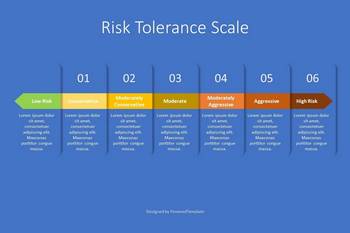This article is a guide on how to create a comprehensive project plan. We have accompanied it with examples of ready-made templates for visualizing the project stages and deliverables for stakeholders, clients, and project team members.
By templates we provide, you can ensure a framework for organizing information and visually appealing slides, graphics, and charts, save time, and ensure consistency in your project plan presentation.
Table of Contents
- Templates are a Great Starting Point for Project Plan
- Outline the Business Case
- Meet with Key Stakeholders
- Define Project Scope
- Assemble a Project Team
- Determine a Project Budget
- Set Project Goals & Objectives
- Outline Project Deliverables
- Create a Project Schedule
- Assign Tasks to Your Team Members
- Do a Risk Analysis
- Create Your Project Plan
- Report Your Progress
Templates are a Great Starting Point for Project Plan
Presentation templates provide a simple and effective way to create high-quality visuals for project plan presentations. They bring together all the different elements of a great presentation – from slide layouts, colors, fonts, animation effects, background styles – in one place.

Whether you’re speaking to your stakeholders, customers, or project plan group members, presentation templates ensure that you’ll be able to deliver an engaging presentation that meets all of your needs. With a few clicks, you can change up the content, branding, and structure of your files without spending hours creating everything from scratch.
When it comes to creating presentations, having the right tools and templates makes all the difference. That’s why templates are a great starting point for a project plan – from introducing a business case to presenting deliverables.
Common types of project plan presentation templates include Microsoft PowerPoint, Google Slides, Keynote, and Pitch Deck. It only takes a few clicks to download your preferred template and customize it with your branding. Simply replace the existing content with your own relevant information.
Outline the Business Case
Before you start any project, it’s important to understand why it’s necessary. Clearly outline the business case, explaining why the project is needed, what problems it will solve, and what benefits it will bring.
-
 Case studies are an incredibly effective form of marketing that you can use to promote your product. Case studies include an in-depth study of a given subject to understand its functionality and success.
Case studies are an incredibly effective form of marketing that you can use to promote your product. Case studies include an in-depth study of a given subject to understand its functionality and success. -
 This presentation template is designed to show your clients how to implement their new business.
This presentation template is designed to show your clients how to implement their new business. -
 This Case Study Presentation Slide contains a dashboard-looking layout with tables and statistics data and is created to describe business case studies.
This Case Study Presentation Slide contains a dashboard-looking layout with tables and statistics data and is created to describe business case studies.
Every project has a purpose or a reason, and that’s what’s called the business case. This document explains why the project is being undertaken, the expected benefits, and the return on investment. It also addresses any issues that the project aims to solve. The business case is presented to the decision-makers in the organization to explain what needs to be done and how it will be done, along with a feasibility study to assess the practicality of the project. If the business case is approved, then the project can begin.
Meet with Key Stakeholders
Next, schedule a meeting with all key stakeholders to discuss the project’s goals, objectives, scope, and requirements. This will help ensure that everyone is on the same page and that the project is aligned with business objectives.
Stakeholders are individuals or groups who have a vested interest in a project, ranging from those who benefit financially to the project team members responsible for its success. That’s why it is important for project managers to identify these key stakeholders during the planning process, including customers and regulators. Meeting with it is essential to gain a better understanding of what the project management plan should entail and what is expected from the final deliverable.
Define Project Scope
Clearly define the project’s scope, including what is included and what is not. This will help ensure that everyone knows what to expect from the project and what is expected of them.
-
 A project scope statement provides a detailed description of the work that must be done to deliver the output of a project on time and within the allotted budget.
A project scope statement provides a detailed description of the work that must be done to deliver the output of a project on time and within the allotted budget. -
 A comprehensive project proposal includes a list of the key participants in the endeavor and contains a detailed budget that includes a summation of anticipated costs and a time frame for specific expenditures.
A comprehensive project proposal includes a list of the key participants in the endeavor and contains a detailed budget that includes a summation of anticipated costs and a time frame for specific expenditures. -
 The goal of an Agency Proposal is to gain support for your plan by informing the appropriate people. Your ideas or suggestions are more likely to be approved if you can communicate them in a clear, concise manner.
The goal of an Agency Proposal is to gain support for your plan by informing the appropriate people. Your ideas or suggestions are more likely to be approved if you can communicate them in a clear, concise manner.
Defining the project scope involves identifying the tasks needed to achieve the project objectives and produce the required deliverables. This is typically accomplished by developing a work breakdown structure (WBS) because the project scope encompasses both the essential components of the project (deliverables, sub-deliverables, work packages, action items) and non-essential components. Identifying the non-essential components is crucial to the project plan as it helps prevent scope creep, which involves allocating resources to non-essential tasks that do not contribute to the project’s success.
Assemble a Project Team
Assemble a team of skilled professionals with the right mix of expertise and experience to complete the project. This team will be responsible for delivering the project on time and within budget.
It is recommended to gather a diverse group of experienced professionals, forming a multi-disciplinary team that can approach the project management plan from various perspectives.
Determine a Project Budget
Determine the budget required to complete the project successfully. Be sure to account for all costs, including labor, materials, equipment, overhead costs, contingency funds, and other unforeseen expenses.
-
 This project proposal has deadlines and a financial income expenditure chart. It contains a detailed budget that includes a summation of anticipated costs and a time frame for specific expenditures.
This project proposal has deadlines and a financial income expenditure chart. It contains a detailed budget that includes a summation of anticipated costs and a time frame for specific expenditures. -
 Marketing Plan Presentation Template
Marketing Plan Presentation Template -
 This business proposal has a financial income expenditure chart. It contains a detailed budget that includes a summation of anticipated costs and a time frame for specific expenditures.
This business proposal has a financial income expenditure chart. It contains a detailed budget that includes a summation of anticipated costs and a time frame for specific expenditures.
Once you have identified all the necessary resources and costs associated with the project, you can begin estimating the costs of each task. This will allow you to establish a cost baseline, which is the base for your project budget. It is important to ensure that the budget is realistic and accurately reflects the costs of the project, while also leaving room for unexpected expenses or changes in the project scope.
Set Project Goals & Objectives
Set clear and measurable project goals and objectives:
- goals refer to the overall outcomes you want to achieve, which tend to be broad in scope;
- objectives are specific and measurable actions that need to be taken to achieve the goals.
This will help ensure that the team knows what is expected of them and that progress can be tracked effectively.
During the project planning phase, the goals and objectives are further refined from the business case, and specific tasks are identified. This helps to ensure that the goals are clear, measurable, and attainable. All these goals and objectives are documented in a project charter, which will guide the project team throughout the project lifecycle.
Outline Project Deliverables
Clearly outline the project’s deliverables, including what will be delivered and when. This will help ensure that everyone knows what to expect from the project and when.
A project can encompass a variety of deliverables that include goods, services, or results necessary to fulfill a task, process, phase, subproject, or the overall project itself. The final deliverable is often the primary reason for undertaking the project, and its successful completion marks the end of the project.
-
 A sequence of 8 circles with arrows each pointing to the next one, as a business concept of events, processes, or phases of process or product development.
A sequence of 8 circles with arrows each pointing to the next one, as a business concept of events, processes, or phases of process or product development. -
 The Project Planning template offers a professional look for your unique MS PowerPoint slideshows.
The Project Planning template offers a professional look for your unique MS PowerPoint slideshows. -
 6 staggered connected colored diamonds as a business concept of steps, options, stages, phases, or parts.
6 staggered connected colored diamonds as a business concept of steps, options, stages, phases, or parts.
Within the project scope, there may be several subprojects, phases, work packages, activities, and tasks, each with its own deliverables. It is essential to identify and define these deliverables in the project plan, along with the criteria for quality assurance and stakeholders’ expectations. Moreover, assigning accountability for the timely and successful completion of each deliverable is crucial to ensure project success.
Create a Project Schedule
Create a detailed project schedule that outlines all project tasks, dependencies, and timelines. This will help ensure that the project is completed on time and within budget.
The project schedule is a crucial element of project management, as it dictates the timeline for completing all necessary tasks and reaching the final deliverable within the set deadline. Creating a project schedule involves identifying all the required tasks and placing them on a timeline, which can be challenging and overwhelming. To simplify this process, schedules are often divided into phases, with each phase having a specific set of tasks and marked by a milestone indicating its completion and the start of the next phase. This helps to keep the project organized and manageable, ensuring that everything is on track toward achieving the final goal.
Assign Tasks to Your Team Members
Assign specific tasks to team members based on their skills and experience. Be sure to communicate deadlines and expectations clearly.
Once the project plan has been created, it needs to be put into action by assigning tasks to team members. It is important to clearly define each team member’s roles and responsibilities to ensure everyone knows what is expected of them. When assigning tasks from the project plan, make sure to provide clear instructions and any necessary documentation needed to successfully execute the tasks.
Do a Risk Analysis
Identify potential risks and create a plan to mitigate them. This will help ensure that the project stays on track and that risks are minimized.
Risk management is an important aspect of project planning and execution. While there are several types of risks, such as scope, technical, and schedule risks, it is crucial to understand that every project has some level of risk. Even the most detailed project plan can be impacted by internal and external factors, which can affect the project’s time, cost, and scope. Thus, it is important to remain flexible and prepare for potential risks in advance.
-
 Create professional presentations on safety and risk analysis, and risk prevention topics that appeal to global audiences.
Create professional presentations on safety and risk analysis, and risk prevention topics that appeal to global audiences. -
 7 levels of risk tolerance from low to high for risk management and analysis.
7 levels of risk tolerance from low to high for risk management and analysis. -
 The severity of any risk can be defined in terms of two dimensions: the impact, the impact of the risk on the project if it occurs; and probability, the degree of probability of occurrence of the consequences of the risk.
The severity of any risk can be defined in terms of two dimensions: the impact, the impact of the risk on the project if it occurs; and probability, the degree of probability of occurrence of the consequences of the risk.
One way to prepare for risk is to develop a change management plan, which outlines the steps that will be taken to address changes that may arise during the project. Additionally, it is important to track your progress throughout the execution phase by using project status reports and project planning software to monitor risk. This will help you to identify potential issues early on, allowing you to take proactive measures to mitigate or eliminate them. By being proactive in managing risk, you can increase the likelihood of project success.
Create Your Project Plan
Compile all the information gathered in the previous steps to create a comprehensive project plan. Be sure to include all details related to the project, including scope, budget, goals, objectives, deliverables, and schedule.
A project plan comprises a set of official documents that outline the implementation and management phases of a project. This plan takes into account various factors such as risk management, resource allocation, and communication, while also covering the baselines for scope, cost, and schedule.
-
 The project charter is a document that officially starts a project or a project phase. This comprehensive document names the project manager and defines, the authority of the project manager.
The project charter is a document that officially starts a project or a project phase. This comprehensive document names the project manager and defines, the authority of the project manager. -
 A sales proposal is a presentation where a seller offers services to prospective buyers. In this offer, sellers demonstrate how they can serve the needs of buyers by showing the key benefits of their products or services.
A sales proposal is a presentation where a seller offers services to prospective buyers. In this offer, sellers demonstrate how they can serve the needs of buyers by showing the key benefits of their products or services. -
 The 4 Steps to Successful Stakeholder Management is a free presentation diagram slide that represents a concept of 4 stages, or milestones of the stakeholder management circular process.
The 4 Steps to Successful Stakeholder Management is a free presentation diagram slide that represents a concept of 4 stages, or milestones of the stakeholder management circular process.
While the specific requirements for creating a project management plan may differ depending on the project, in general, there are several key documents that you will typically need to include:
- Project charter
- Project schedule
- Project budget
- Project scope statement
- Risk management plan
- Change management plan
- Cost management plan
- Resource management plan
- Stakeholder management plan
Report Your Progress
Regularly report on project progress to stakeholders, including any changes or challenges. This will help ensure that everyone is aware of the project’s status and that any issues can be addressed in a timely manner.
The main objective of a project is to deliver a successful outcome to its stakeholders. In order to keep them engaged and satisfied, it is crucial to provide regular updates and track progress using project status reports. To achieve this, a work breakdown structure (WBS) can be created during the planning phase to help stakeholders understand how the project will be executed.
-
 The Project Status template offers professional charts, diagrams, tables, and other data visualization elements.
The Project Status template offers professional charts, diagrams, tables, and other data visualization elements. -
 A project management report is a document that describes a business project and the steps a team should take to complete it. This template contains ready topics that help you to make a project management report.
A project management report is a document that describes a business project and the steps a team should take to complete it. This template contains ready topics that help you to make a project management report. -
 Project Strategy is an important tool for project managers that ensure the optimal efficiency of work operations. The Project Strategy presentation template has ready-for-work content designed in dark colors.
Project Strategy is an important tool for project managers that ensure the optimal efficiency of work operations. The Project Strategy presentation template has ready-for-work content designed in dark colors.
Regular planning meetings can also be held to provide progress reports and address any concerns or questions they may have. Additionally, a stakeholder management plan can be developed to outline how stakeholders will be engaged throughout the project.
By following these project planning steps, you’ll be able to create a comprehensive project plan that sets you up for success.

